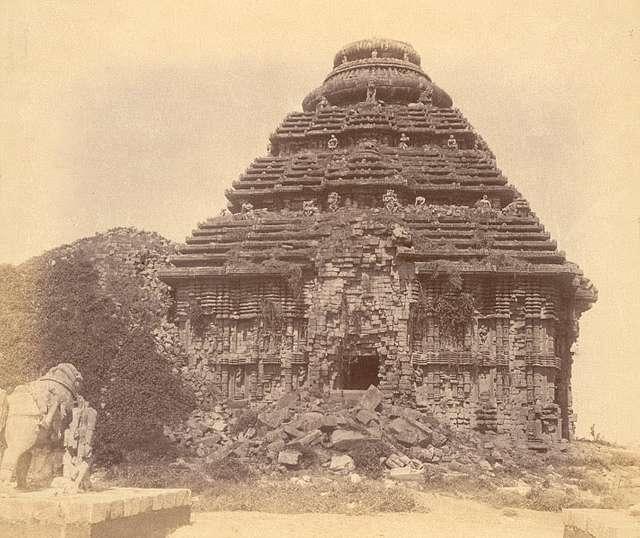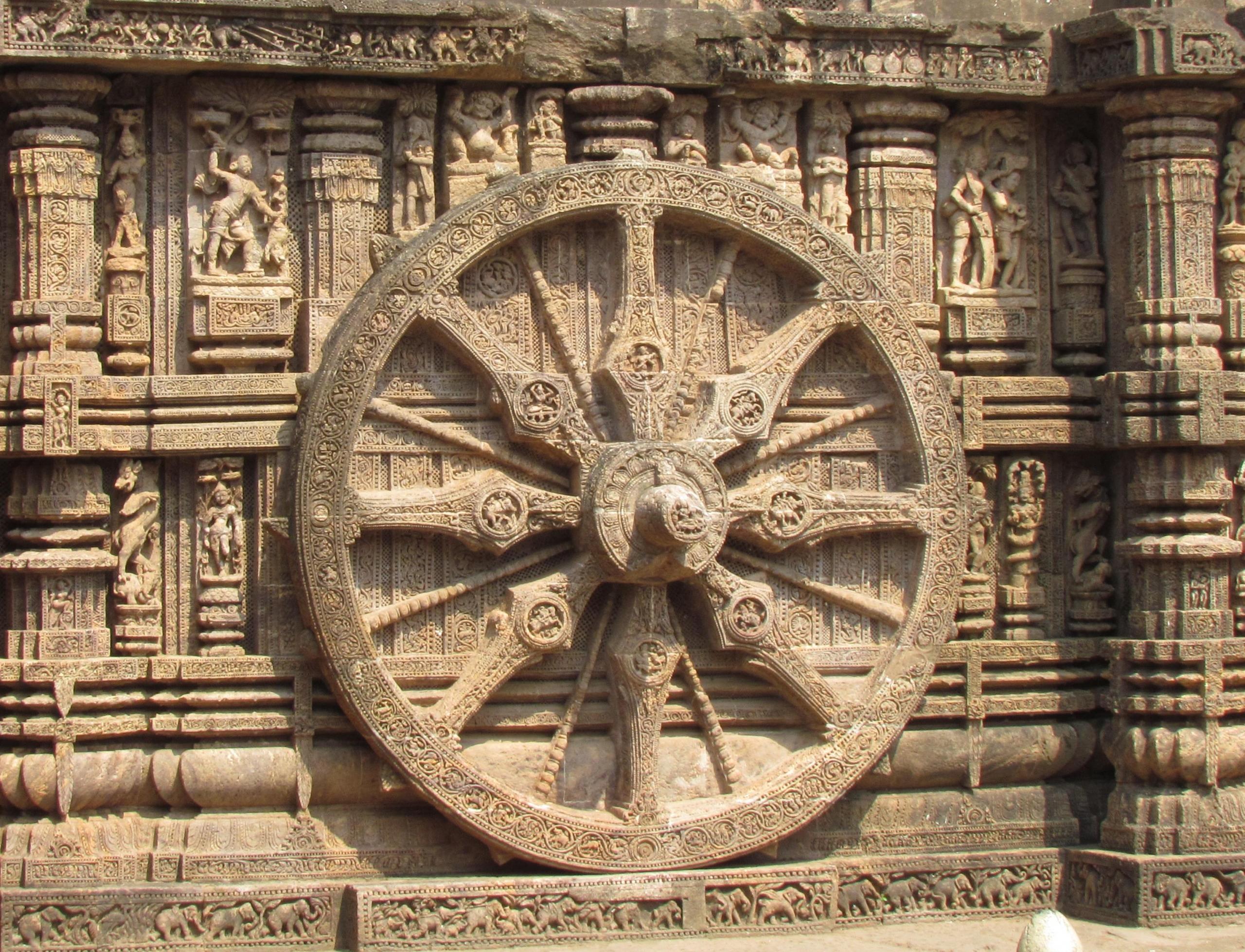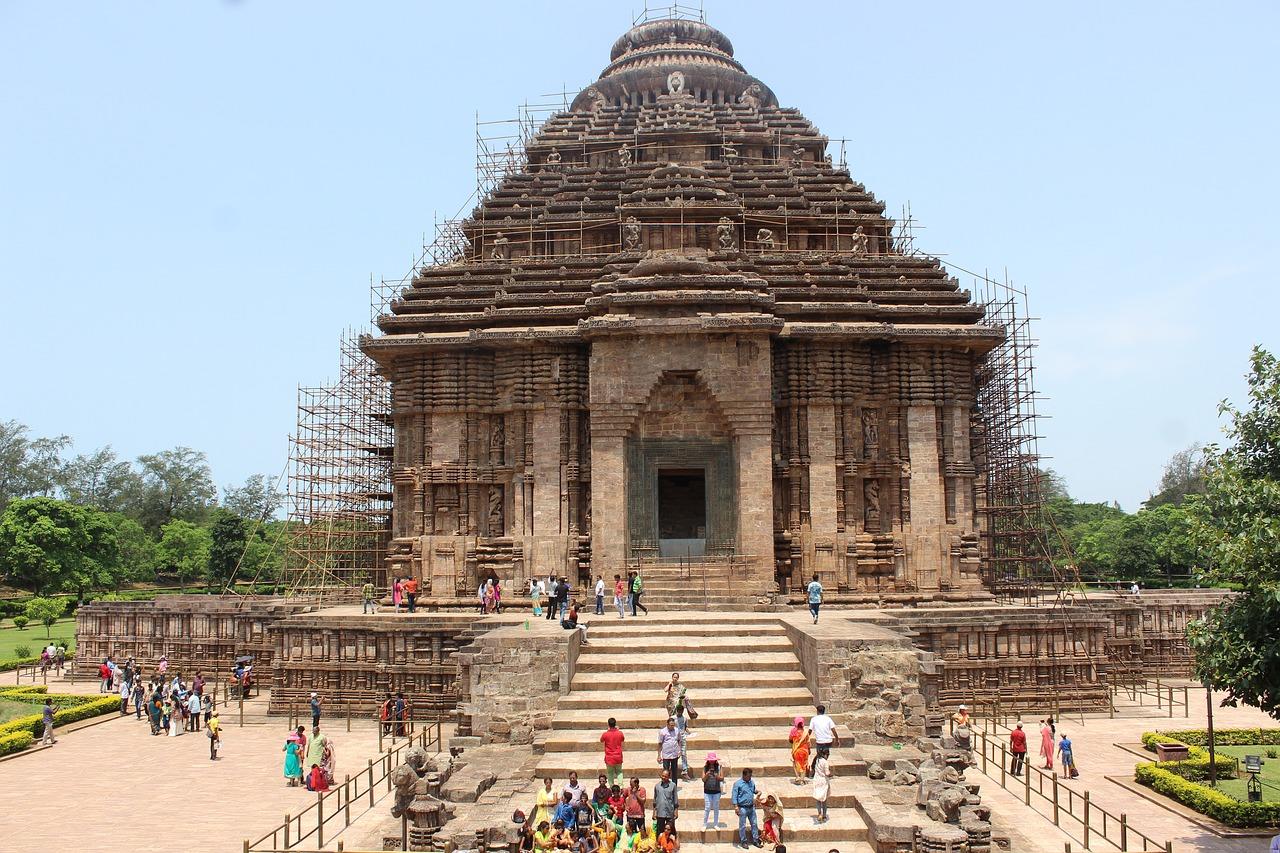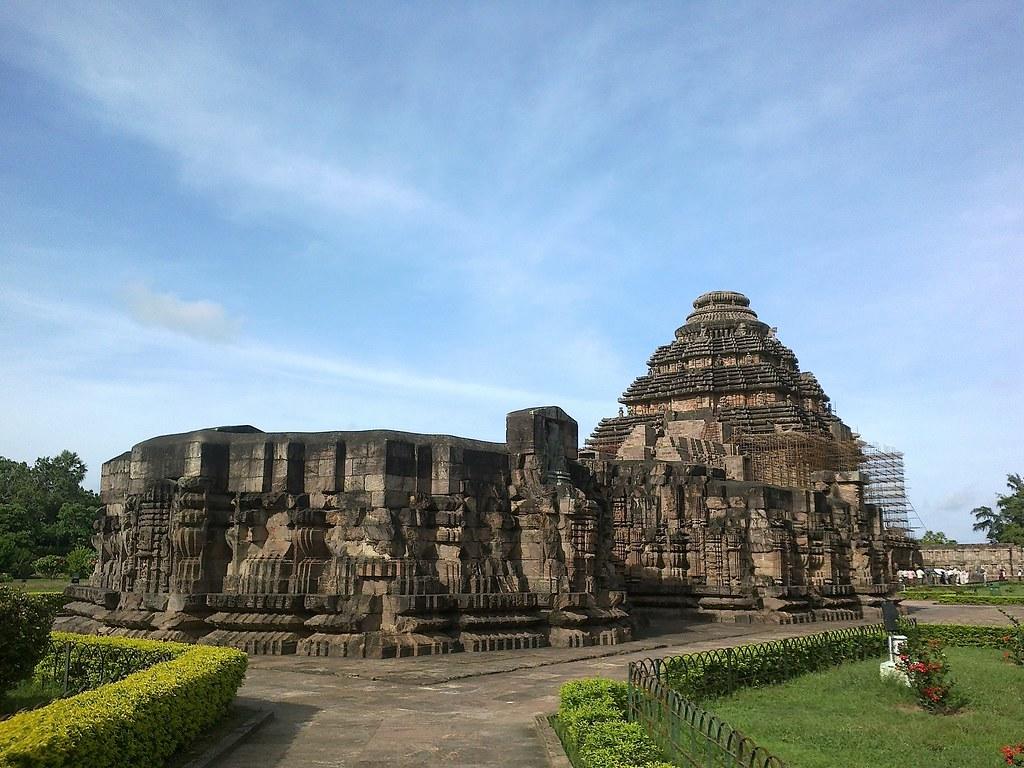The temple in Konark, drenched in the rising light of the eastern sun, and situated on the banks of the Bay of Bengal, is a colossal depiction of the sun deity, Surya's, chariot, driven by a team of 6 horses and featuring 24 symbolic-patterned wheels. In the small hamlet of Konark, King Narasimhadeva I of the Eastern Ganga Dynasty erected the temple in the thirteenth century. Over 10 years were spent building the temple by a talented group of artisans and architects.
The temple is a marvel of architecture that embodies the Orissan architectural style. The location is distinguished for its fine details, precise carvings, and rich workmanship. Numerous sculptures that depict everyday situations, mythological stories, and celestial entities adorn the shrine. The temple's exquisitely carved sensual kama and mithuna scenes are among its most notable characteristics. Scholarly discussions have been triggered by these sensual engravings.
Discover the romantic history of the Taj Mahal.

History of Konark Sun Temple
The Sanskrit terms kona (corner or angle) and arka (the sun) are combined to form the word konark. This suggests that the sun god was the primary deity and that the temple's design was angular. The temple is designed in the nagara style of Hindu temple building, which is a subtype of the Kalinga or Orissa style.

Constructed completely of stone, the Konarak temple resembles a massive chariot pulled by seven opulently decorated, charging horses. It has 12 pairs of ornate wheels. The "chariot's" sides have the wheels engraved on them. The primary reason for designing this temple in the shape of a chariot is related to Hindu myths about Surya, who is typically depicted riding a chariot drawn by seven horses. The 12 months of the year are symbolized by the 12 pairs of wheels.
The Legend of Konark
Ancient Hindu books with legendary value, such as the Puranas, describe the legend of Konark. It was thought that Konaditya (Konark) was the most revered site in the whole Odisha region for Surya worship. One of the numerous sons of the god Krishna, Samba, built a shrine dedicated to Surya as a token of appreciation for the latter's curing of his skin disease. Since Surya's image was not worshipped by the local Brahmanas (the Hindu priestly elite), he even imported some Magi (sun worshippers) from Persia.
Peek into the history of the Gateway of India and its importance for the British Empire.
A Royal Divination
The precise motivation for Narasimhadeva's temple construction is unknown. However, historians have speculated that the king may have done this to mark a conquest or to thank someone for fulfilling a wish. He may have also done it just to express his love for Surya, but only after incorporating his own interpretation of life from the standpoint of a king. The sculptures that show various royal pastimes such as hunting, processions, and military scenes serve as evidence of this.
Sculptures at Konark
Eastern Ganga art reached its peak under Narasimhadeva. The sculptures at Konark demonstrate these heights. The sculptors have filled every inch of available space with a seemingly limitless array of subjects, with individuals engaging in activities associated with kama, as well as music and dance. In addition to floral and geometrical elements, there are representations of mythological creatures, birds, and animals. Once the stones were in their proper positions, the designs were cut.
King Narasimhadeva is portrayed in panels in a variety of capacities, including that of a superb archer, a scholar evaluating literary works that poets have submitted to him, a passionately religious devotee, and a happy man lounging on a swing in his palace. One of the most distinctive features of this temple is the enormous idol of Surya located in the sanctuary's southern niche. Furthermore, it is among the very few sculptures in India that depict a god with boots on. The god is shown standing atop his chariot, which is pulled by 7 horses. Made from a single piece, the entire sculpture rests on a pedestal made of chlorite.
Learn the fascinating history of Charminar, Hyderabad's crowning jewel.
Medieval Decay
When the first European settlers came across the Bay of Bengal, they called Konark the "Black Pagoda" and the Jagannatha temple in Puri the "White Pagoda" because of the white stucco that has since been removed for restoration. It is still unknown why the deul and the shikhara of the Sun Temple collapsed. The predominant view is that the temple progressively collapsed due to the usage of subpar khondalite, which caused the structure to eventually deteriorate.
The image of Surya, the presiding deity, has also never been discovered. Therefore its original size, shape, and composition are unknown. Once more, the conjecture surrounding it lends credence to a variety of theories, such as its destruction or transfer to the Jagannatha temple. The temple gradually began to deteriorate as a result of neglect following the king's passing.
Trace India's spiritual roots with a history of the Khajuraho temples.

Revival and Restoration
Renowned Scottish historian of British India, James Fergusson (1808–1836 CE), visited Konark in 1837 and made a sketch. Fergusson was instrumental in the rediscovery of old Indian antiquities and architectural structures. The height of the remaining piece, according to his estimation, is between 42.67 and 45.72 meters. The site was reduced to a jumble of stones covered in sporadic trees by 1868 CE.
Travel to India's seat of political power and unravel the history of the Red Fort.
According to Fergusson, a local raja (king) had taken down several statues to adorn a temple he was constructing in his own fort, and the temple itself was miraculously spared from being turned into a lighthouse. After Lt. Governor John Woodburn 'started the commencement of a well-planned campaign to rescue the temple at any cost by implementing adequate measures', conservation efforts gained momentum starting in 1900 CE. The Archaeological Survey of India has been looking after and safeguarding the site since 1939 CE.
Interesting Facts About the Sun Temple, Konark
- Renowned for its beautiful architecture and rich stone carvings, Konark Sun Temple is recognized as a UNESCO World Heritage Site. In terms of architecture, it is among India's most striking temples.
- The solar deity, Surya, is the object of devotion in the temple. The Konark Sun Temple in Odisha, the Modhera Sun Temple in Gujarat, and the Martand Sun Temple in Kashmir are a few of the most important sun temples in India.
- The temple resembles a chariot, complete with beautifully carved wheels and charging horses. The temple's building is a superb illustration of the Kalinga architectural style. Additionally, the temple has ornate stone sculptures that portray Hindu mythological tales.
- The main entrance of the temple receives the first light of the day, and it's fascinating to note that the famous Konark wheel doubles as a sundial. It also provides the precise time.
Importance of the Sun Temple, Konark
For Hindus and history enthusiasts, the temple is extremely significant both spiritually and culturally. It is a storehouse of antiquated wisdom. Because of the temple's position, the sanctum sanctorum would be illuminated by the first light of the rising sun as it passes through the main entrance. The temple serves as a symbol of the peaceful coexistence of spirituality, science, and artistic expression in ancient India.
Discover the towering glory that is the Qutab Minar through a historical lens.
The temple's construction reflects the cultural and religious variety of the area by fusing Buddhist, Indian, and Jain architectural elements. The temple is also a superb illustration of how to use the Indian architectural theory known as Vastu Shastra, which places a strong emphasis on a building's alignment with the cardinal points and other geometric shapes.
An architectural wonder that showcases India's rich cultural legacy is the Konark Sun Temple. The elaborate sculptures, carvings, and architectural elements of the temple attest to the talent and artistry of the artists of that era. The temple's blend of Buddhist, Jain, and Indian architectural traditions is a reflection of the region's diversity in terms of culture and religion. It is a UNESCO World Heritage Site and a must-visit location for anybody interested in Indian history and culture, despite being in a condition of ruin.
Konark Sun Temple Tourism

Revel in the history of the Ajanta Caves and celebrate India's cultural diversity.
The Sun Temple is a popular tourist destination because of its stunning architecture and rich historical background, drawing tourists from all over the world. The Konark Sun Temple is open from 6 am to 8 pm. Every day is an open day at the temple. Indian citizens can purchase a ticket to the Konark Sun Temple for Rs 40, while foreign visitors must spend Rs 600. For citizens of BIMSTEC and SAARC, the entrance cost to Konark Temple is Rs 40.
Marvel at India's architectural glory through a history of the Ellora Caves.
At the location, tickets for the light and sound spectacle at Konark Sun Temple can be purchased. Wireless headphones are given to the guests, and they can select between English, Hindi, and Odiya. The show begins at 7:00 p.m. and lasts for an hour. Each passenger must pay Rs 30 for a ticket. Annually, the Konark Dance Festival takes place in front of the temple, presenting classical dance performances that highlight the rich cultural legacy of the area.















